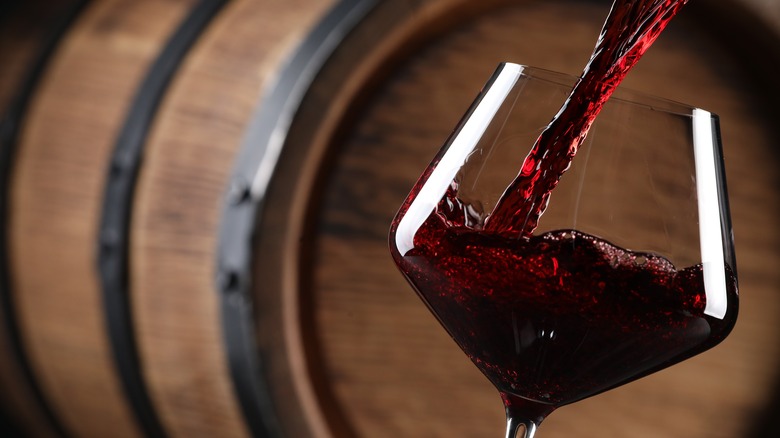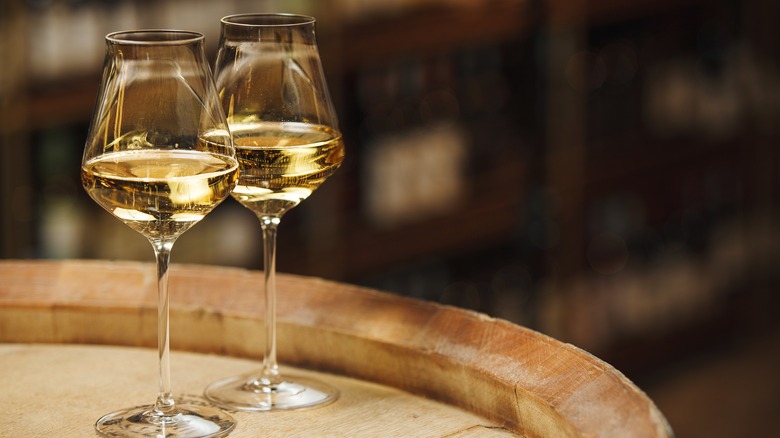What, Exactly, Are Tannins In Wine?
Wine can be a daunting subject, which is why learning about its basic qualities is a great place to start. One particular characteristic of wines you'll hear talked about often is its tannins. Tannins are astringent, bitter compounds that naturally occur in plants and deter animals from eating them. A wine's tannin content directly correlates with how "dry" it feels after you drink it. You know that sort of mouth-shriveling feeling you get after drinking certain types; it's the same type of "dry" sensation you get if you bite into a piece of unripened fruit like, say, a pear. You'll also experience the effects of tannins if you drink various types of tea, such as black tea.
On paper, that description sounds undesirable. But the bitterness associated with tannins can be a coveted thing, such as when it's found in coffee and chocolate. That's why a tannin descriptor for a wine can be so handy — it explains the level of dryness in terms of mouthfeel, and can also describe certain qualities you might experience when drinking a wine, ranging across the entire spectrum of white, orange (yes, orange wine is a thing), and red.
Where tannins in wine come from
Tannins don't just come from one place. Instead, they come from multiple sources, including the grape skin, the grape pip (a.k.a., the seed), the grape's stems, and even the wooden barrel that a wine may be aged in. The skin is the main source of tannins, but if a wine is fermented with the pips and stems included (such as is typical for red wine), more tannins can leach into the liquid. This results in a drier wine.
Tannins are a bigger flavor component of red wine; since white wine is typically made with pressed juice and doesn't have much grape skin contact beyond that, it typically contains fewer tannins. That's not a hard rule, however. Some white wines do get macerated a bit with the skins, including wine made with grapes such as Riesling and Gewürztraminer varietals. Oak barrels also lend tannins to white wine. As a wine ages in a barrel, the tannins can change the way the final product feels on the tongue.
Why tannins are valuable in a wine
So the whole mouth-chapping sensation isn't admittedly the best-sounding characteristic, but tannins do lend some really desirable traits to the final product, namely structure, weight, and texture. After all, drinking a fine wine that doesn't amount to much more than watery grape juice doesn't sound all that appealing. Of course, too bitter isn't good either, so finding a balance you like could involve plenty of sampling.
Tannins are known to balance out things such as fat and protein in certain types of food, which is why tannin-heavy red wines are favored when paired with something like a beefy, juicy steak. The complimentary effect makes both items more enjoyable at once, which is definitely a joyful eating experience.
For those of you who are relative newcomers to wine and want to learn how to appreciate it, we've previously written a guide on how to enjoy red wine as a beginner. (Don't worry, I'm a novice, too.) But getting to know the basics is always a good way to start, and hopefully you'll find that the world has a bunch of great wine you have yet to discover. Ultimately, tannins are just a part of what makes a wine appealing.


